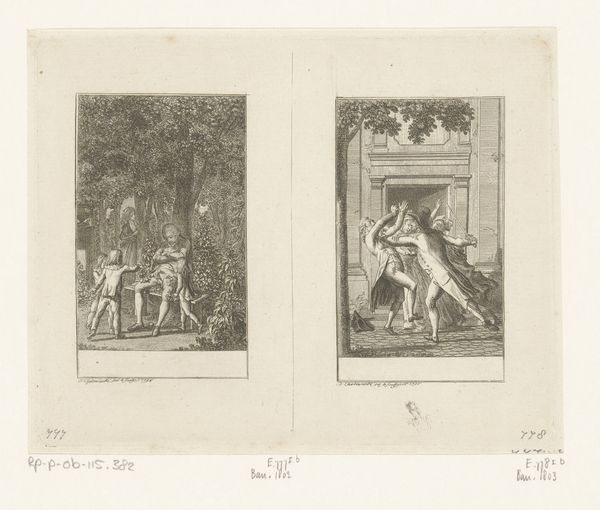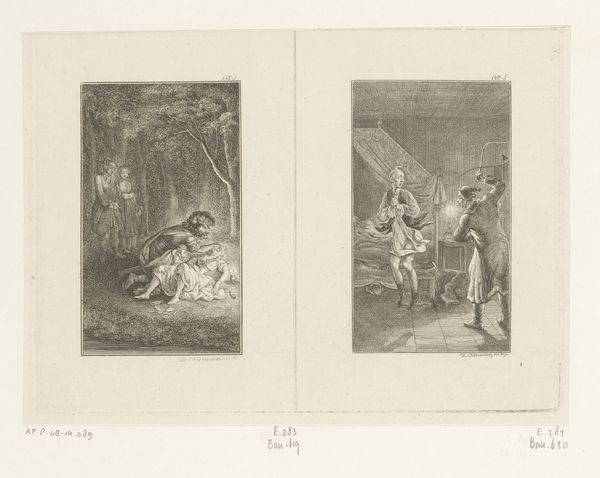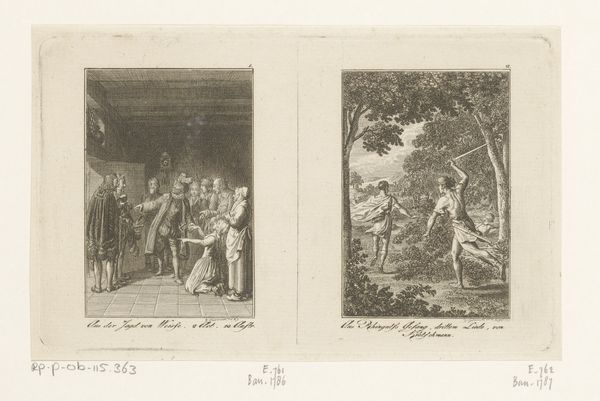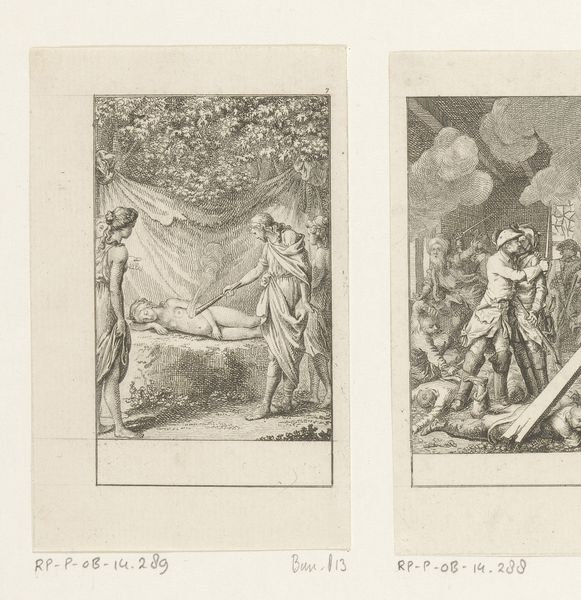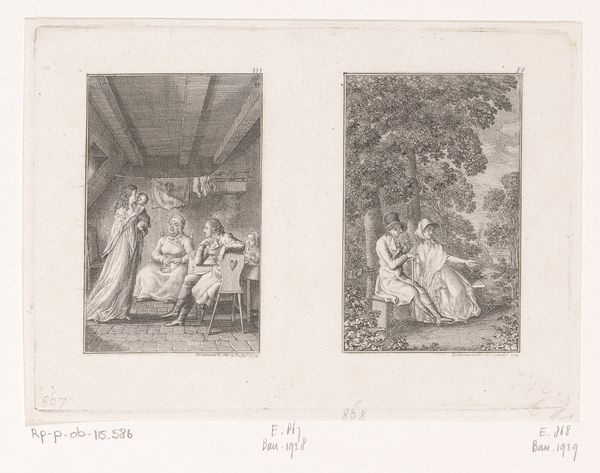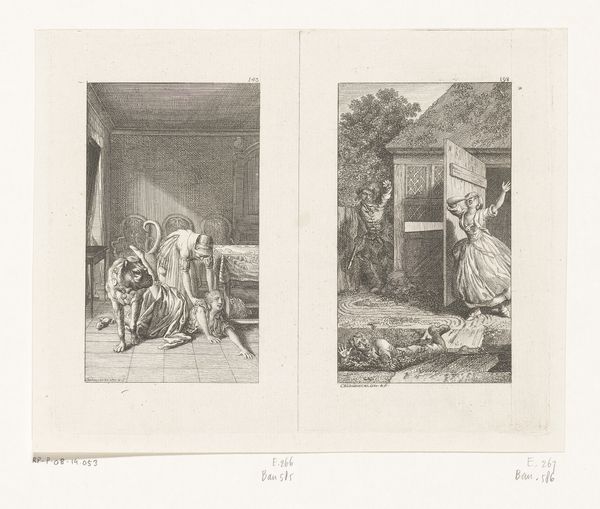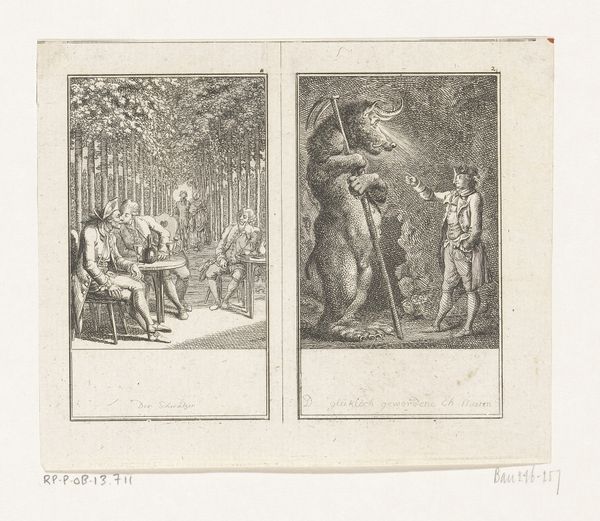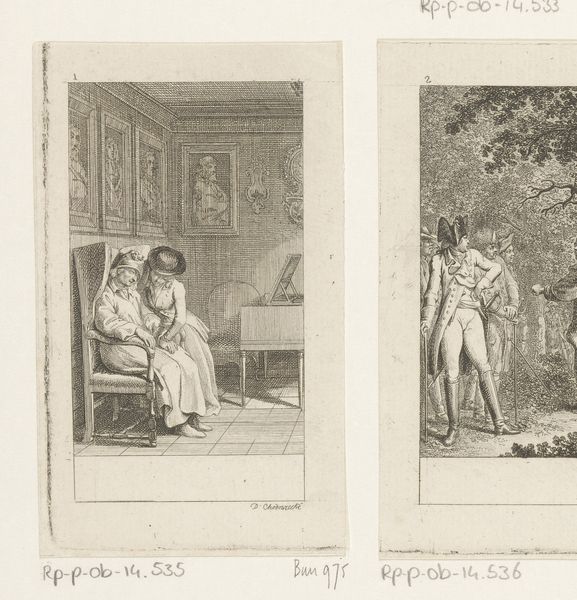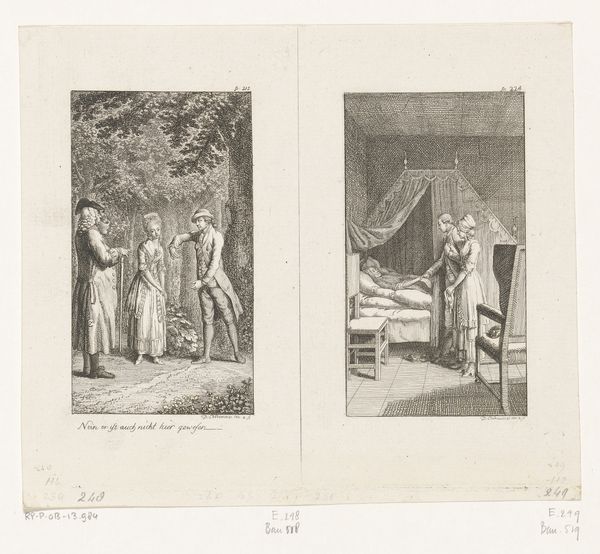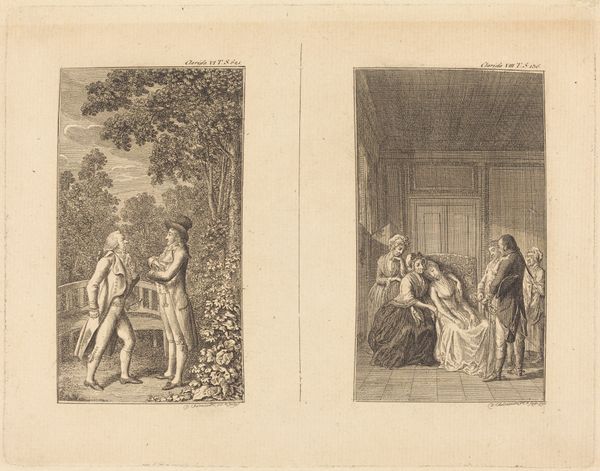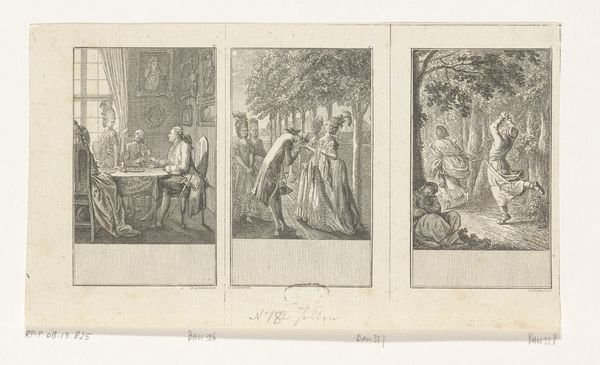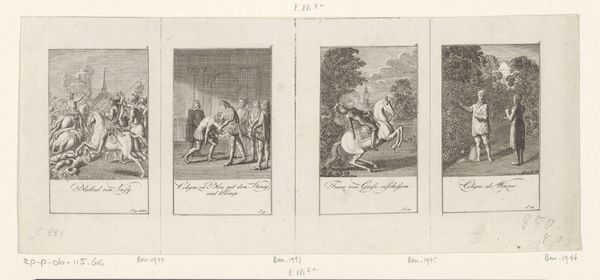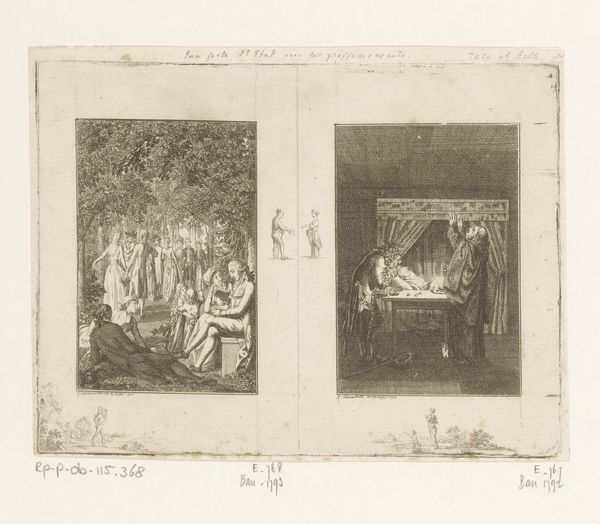
Twee voorstellingen uit Clarissa van Samuel Richardson 1796
0:00
0:00
Dimensions: height 169 mm, width 210 mm
Copyright: Rijks Museum: Open Domain
Editor: Here we have "Twee voorstellingen uit Clarissa van Samuel Richardson," made in 1796 by Daniel Nikolaus Chodowiecki. They're two engravings side by side. The aged paper gives it a real historical feel, but what strikes me is the contrast between the violent scene on the left and the somber interior on the right. What story do you think this print is telling? Curator: Well, look closer at the medium, engraving. Notice how the lines are meticulously etched. The production of prints at this time meant wider dissemination of narratives. These aren’t just images; they're commodities intended for a growing readership eager to consume stories like Richardson's "Clarissa." Think about the labor involved in creating each plate and printing multiple copies. It challenges our concept of the artist as singular genius, doesn't it? Editor: It definitely does. I was thinking more about the content. How do the images function narratively? The one on the left appears to be some sort of attack or duel, and on the right a death scene. How does the method relate to that narrative? Curator: Consider that the story "Clarissa," and its reproductions, circulated amongst a specific social class with access to both books and prints. The drama and moral lessons embedded in the narrative likely reinforced their values and understanding of social order. And those values get replicated as the method of dissemination became more streamlined. Each print becomes a piece in the production of a social idea, really. Editor: So, it's not just about the individual images but about their mass production and consumption within a particular societal context? Curator: Precisely. We're looking at a feedback loop where material production and social values are constantly shaping one another. By understanding the print’s materiality and its circulation, we gain insights into the cultural landscape of the late 18th century. Editor: That really shifts my perspective. I hadn't thought about the printing process as such a vital part of understanding the artwork's message and social function. It goes beyond the image itself. Curator: Exactly! And hopefully it makes you think twice about how artworks are not isolated precious objects, but the result of, and participants in, larger processes.
Comments
No comments
Be the first to comment and join the conversation on the ultimate creative platform.
